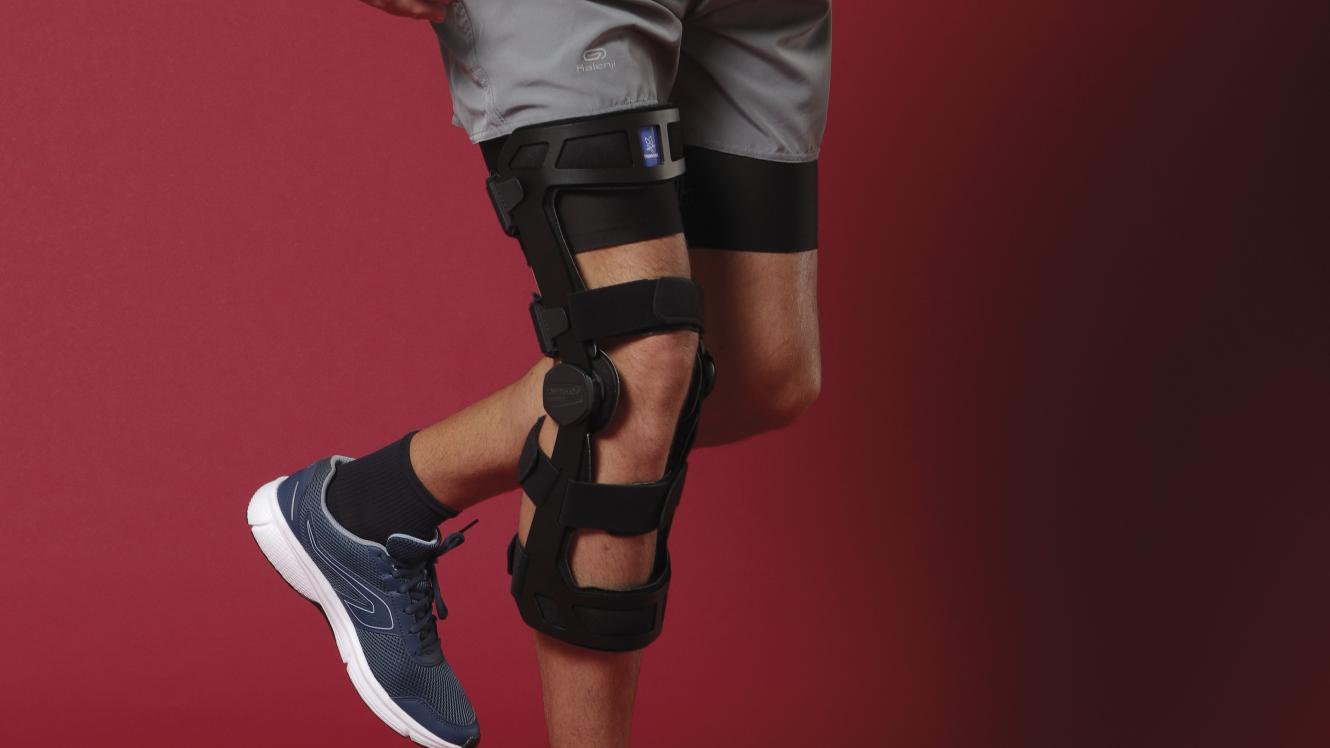The knee
The knee is a system made up of bones, ligaments, tendons and cartilage, enabling us to assume a static position and walk. Its mobility is based on a combination of rolling and sliding movements. Most knee problems are caused by injury (sprain or cruciate ligament rupture) or degenerative conditions (osteoarthritis).

The knee is a large joint that is important to support the body and ensure its mobility. It consists of three bones: the patella, the femur and the tibia, two joints (femoro-patellar, femoro-tibial), ligaments and tendons (of the patella and quadriceps).
Traumatic conditions
Sprains, with pulling or tearing of the ligaments, are the most common (43%) knee injury. Treatment consists of rest, the application of ice, the application of a bandage, elevation of the affected limb, painkillers and the use of walking sticks to get about. Depending on the severity of the sprain, surgery may be necessary. Immobilisation using a soft or rigid brace extends from 1 to 3 weeks. Physiotherapy can speed up recovery.
A dislocation is a sprain in which the joint surfaces are displaced, causing the ligaments to tear. The dislocation should be reduced (the joint must be put back in place) then immobilised. A fracture of the patella (or kneecap) is a bone break requiring immobilisation and sometimes surgery.
Inflammations
These mainly affect people taking part in sports. Patellar tendinitis affects handball, volleyball and basketball players. It causes pain located below the kneecap during exertion. Femoro-patellar syndrome or patellar syndrome mostly affects runners. The pain is felt at the front of the knee behind the kneecap, when sitting for prolonged periods or when going downhill. Treatment for these inflammations involves rest, anti-inflammatories and painkillers. A brace should be used when resuming activities. In patellar syndrome, strengthening of the quadriceps muscle may be necessary.
Gonarthrosis, or osteoarthritis of the knee
Osteoarthritis corresponds to premature wear of the cartilage of the knee joint, often associated with local inflammation and bony outgrowths (osteophytes). It is the most common osteoarthritis of the lower limbs, particularly in people who are overweight and sedentary, but also in athletes. It causes pain on movement and stiffness impeding activities. Lifestyle and dietary measures, painkillers, the use of braces or walking sticks and physiotherapy are some of the solutions to relieve pain and restore joint mobility.